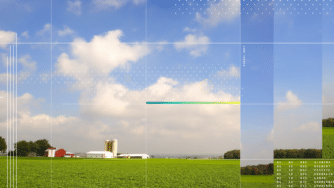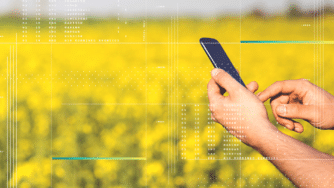By Marie Coffin
The CIBO website shows a map of the United States and features a yield forecast for every county that grows corn, soy, or cotton. These yield forecasts are the culmination of a journey — a journey that encompasses the very real (what is the soil composition of a particular field in Iowa?), the speculative (what will the weather be like this year?), and the theoretical (how will plants grow in this environment?).
At the heart of the CIBO forecasting engine is a comprehensive crop modeling system that takes a known single field in a known growing season and simulates plant growth and grain yield for the field. (For more details on how our plant simulation works, see here.) By itself, that system can take grower information and estimate yield. But how do we take the next step of estimating the yield of a county, a state, or the entire Grain Belt, and how do we estimate future yields for a growing season that is only beginning? The answer lies in a complex web of information that can realistically simulate a future that does not yet exist.
The CIBO forecasting engine starts with sampling: first, we identify every county in the U.S. that has a significant acreage of a particular crop, and then sample fields within each county where the crop has been grown. Based on the field location, we can use publicly available data to gain insight into the soil composition. From there, we can infer what crop rotations, planting dates, cultivars/maturity groups, fertilizer regimes, irrigation, and other management practices are typically used in this location. This allows us to build a profile of a “typical” farming scenario for each field. But, of course, the outcome will depend heavily on the weather — the primary factor a farmer cannot control.
To assess the possible effects of weather, CIBO blends observed weather data with state-of-the-art seasonal predictions to simulate a range of possible weather scenarios for the 2020 growing season. Using these ranges of weather scenarios, we conduct meticulous analysis to see the impact of different weather on yields and maturity date.
For each field, the range of weather forecasts is combined with the typical farming scenario and fed into the simulation system. This results in a collection of possible outcomes for that field. We combine these possible outcomes across the sample of fields in a county to obtain a composite prediction for the whole county. This composite prediction can be averaged to produce a single yield, but it can often be more helpful to consider the composite range of likely yields.
This process is repeated for each county, and for each crop, to produce the U.S. maps of CIBO forecasts. Those maps (one for each crop) are the product of over 15 million individual scenario simulations of an entire growing season on a field. Then we repeat the process again and again; as time passes, we replace weather forecasts with actual weather observations. As a result, new weather forecasts are created. Each time the forecast map is updated, another 15 million simulations are run and compiled.
Of course, as the growing season progresses, our overall level of uncertainty narrows. Not only do we know more about the actual weather situation, we can also use remote sensing to gain a better picture of how actual planting dates compare to projected planting, how many acres are lost to adverse conditions, and how crop maturity is progressing. This is how early-season broad strokes are brought into focus to show a detailed picture of growing season trends across the Grain Belt.
About Marie Coffin
Marie Coffin is the VP, Science and Modeling at CIBO, a science-driven software startup. She has focused on being a biostatistician at agriculture companies. Prior to CIBO, she worked for Monsanto, Icoria, Paradigm Genetics, and was an assistant professor at Clemson University. She holds a BS in mathematics from South Dakota State University and a Ph.D. in statistics from Iowa State University.



